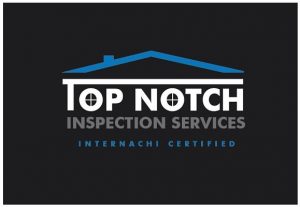The top ten home inspection problems are revealed
When buying a home, a professional home inspection will reveal a lot about your future dream house. Furthermore, besides learning about all the mechanical operation of your home. The inspection will reveal any obvious defects. Moreover, the American Society of Home Inspectors (ASHI) recently surveyed its members to find out what were the top ten home inspection problems.
1. Improper surface grading and drainage
Grading and drainage was by far the most frequently-found problem. Which, was reported by 36 percent of inspectors. It’s responsible for many common household maladies. Such as, cracked slabs and water penetration of the basement, footings or crawlspace. The most effective remedies for bad drainage not only, include re-grading the ground around the house. But also, include repairing or installing a gutter and downspout system and providing positive drainage away from the foundation.
2. Improper and undersized electrical wiring
20 percent of inspectors found improper electrical wiring to be the most common home inspection problem. Which, includes such situations as insufficient electrical service to the house, aluminum wiring, inadequate overload protection, improper grounding and dangerous amateur wiring connections. The inspectors say that much of the improper wiring they see was put together by do-it-yourselfers. Which, is a serious safety hazard, not just a cosmetic defect
3. Older and damaged roofs
About 9 percent of inspectors cite older and damaged roofs as the most-common home inspection problem. Many wooden roofs are at the end of their useful life. Asphalt shingle roofs only last about 15 to 20 years. Hence, roof leakage caused by old or damaged shingles or improper flashing is a frequent problem. It can be easy and inexpensive to repair damaged tiles and shingles and to re-caulk the roof penetrations. But, expensive major roof repairs may be required down the road, if the repairs are put off.
4. Deficient and older heating systems
Some problems found, are due to deficient and older heating systems. Which include, broken or malfunctioning controls, blocked chimneys, unsafe exhaust flues and cracked heat exchangers. These conditions represent more than simply inefficient heating. They are a major health and safety hazard. Heating systems should be serviced and maintained annually by a professional heating serviceman. According to the manufacturer’s instructions. Although expensive, the newer more efficient central heating systems will help to recoup your investment. By reducing heating and cooling cost.
5. Poor Overall Maintenance
Americans on average, take better care of their cars than they do their homes. Which, seems to be the consensus of many home inspectors. They often come across cracked, peeling or dirty painted surfaces. Also, crumbling masonry, make-shift wiring or plumbing and broken fixtures or appliances. Although some of these problems may seem more cosmetic than serious, they reflect the overall lack of care that has been given to a home.
6. Structural Problems
Structural issues are a result of problems in one or more of the other categories. Many houses sustain some, although usually not serious, damage to structural components. Such as, foundation walls, floor joists, rafters or window and door headers. These problems are more common in older homes.
7. Plumbing problems
Plumbing defects ranked high among the house problems encountered. Some of which, are the existence of old or incompatible piping materials. This includes, faulty fixtures and waste lines and improperly strapped hot water heaters. Surprisingly, some home inspectors reported finding natural gas leaks in the homes they inspected.
8. Exteriors items
Flaws in a home’s exterior include windows, doors and wall surfaces. Which, are responsible for the discomfort and damage caused by water and air penetration. Inadequate caulking and/or poor weather stripping are the most common culprits of a cold and drafty home.
9. Poor Ventilation
Poor ventilation is mostly due to overly ambitious efforts to save energy. Because, many home owners have “over-sealed” their homes. This results in excessive interior moisture. Which, can cause rotting and premature failure of both structural and nonstructural elements. Moisture from unvented bathrooms and kitchens can damage plaster and may also lead to the accumulation of mold. Thus, often causes allergic reactions.
10. Miscellaneous items
This category included various interior components. Such as, sticky windows and dripping faucets. Miscellaneous issues account for a number of environmental concerns. Which, include lead-based paint and asbestos.
To sum up the list, ASHI notes that 4 of the 10 items relate directly to the damaging effects of water. After a home is built, protecting it against water is the homeowner’s most important and continually challenging task. Also, it is important to remember that the list represents a national average. Problems vary by climate, building codes, and the age of a structure, among other things.
For more information about ASHI or for help in finding an ASHI member near you, contact ASHI at 85 West Algonquin Road, Suite 360, Arlington Heights, IL 60005-4423,
800-743-2744, or on the web at www.ashi.com.

Have a comment?
Call or Text – 757-805-0674
Or send us an email – admin@topnotchinspectva.com


